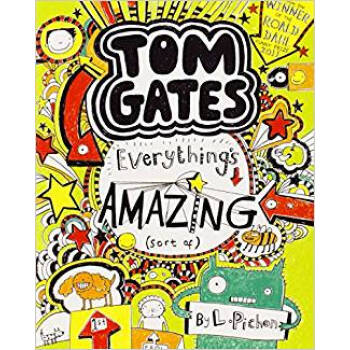![When Genius Failed 營救華爾街 英文原版 [平裝]](https://pic.windowsfront.com/19041269/84527f40-9e5c-4f5d-8448-12edfbb18358.jpg)

具體描述
內容簡介
John Meriwether, a famously successful Wall Street trader, spent the 1980s as a partner at Salomon Brothers, establishing the best--and the brainiest--bond arbitrage group in the world. A mysterious and shy midwesterner, he knitted together a group of Ph.D.-certified arbitrageurs who rewarded him with filial devotion and fabulous profits. Then, in 1991, in the wake of a scandal involving one of his traders, Meriwether abruptly resigned. For two years, his fiercely loyal team--convinced that the chief had been unfairly victimized--plotted their boss's return. Then, in 1993, Meriwether made a historic offer. He gathered together his former disciples and a handful of supereconomists from academia and proposed that they become partners in a new hedge fund different from any Wall Street had ever seen. And so Long-Term Capital Management was born.In a decade that had seen the longest and most rewarding bull market in history, hedge funds were the ne plus ultra of investments: discreet, private clubs limited to those rich enough to pony up millions. They promised that the investors' money would be placed in a variety of trades simultaneously--a "hedging" strategy designed to minimize the possibility of loss. At Long-Term, Meriwether & Co. truly believed that their finely tuned computer models had tamed the genie of risk, and would allow them to bet on the future with near mathematical certainty. And thanks to their cast--which included a pair of future Nobel Prize winners--investors believed them.
From the moment Long-Term opened their offices in posh Greenwich, Connecticut, miles from the pandemonium of Wall Street, it was clear that this would be a hedge fund apart from all others. Though they viewed the big Wall Street investment banks with disdain, so great was Long-Term's aura that these very banks lined up to provide the firm with financing, and on the very sweetest of terms. So self-certain were Long-Term's traders that they borrowed with little concern about the leverage. At first, Long-Term's models stayed on script, and this new gold standard in hedge funds boasted such incredible returns that private investors and even central banks clamored to invest more money. It seemed the geniuses in Greenwich couldn't lose.
Four years later, when a default in Russia set off a global storm that Long-Term's models hadn't anticipated, its supposedly safe portfolios imploded. In five weeks, the professors went from mega-rich geniuses to discredited failures. With the firm about to go under, its staggering $100 billion balance sheet threatened to drag down markets around the world. At the eleventh hour, fearing that the financial system of the world was in peril, the Federal Reserve Bank hastily summoned Wall Street's leading banks to underwrite a bailout.
Roger Lowenstein, the bestselling author of Buffett, captures Long-Term's roller-coaster ride in gripping detail. Drawing on confidential internal memos and interviews with dozens of key players, Lowenstein crafts a story that reads like a first-rate thriller from beginning to end. He explains not just how the fund made and lost its money, but what it was about the personalities of Long-Term's partners, the arrogance of their mathematical certainties, and the late-nineties culture of Wall Street that made it all possible.
When Genius Failed is the cautionary financial tale of our time, the gripping saga of what happened when an elite group of investors believed they could actually deconstruct risk and use virtually limitless leverage to create limitless wealth. In Roger Lowenstein's hands, it is a brilliant tale peppered with fast money, vivid characters, and high drama.
作者簡介
Roger Lowenstein, author of the bestselling Buffett: The Making of an American Capitalist, reported for The Wall Street Journal for more than a decade, and wrote the Journal's stock market column "Heard on the Street" from 1989 to 1991 and the "Intrinsic Value" column from 1995 to 1997. He now writes a column in Smart Money magazine, and has written for The New York Times and The New Republic, among other publications. He has three children and lives in Westfield, New Jersey.精彩書評
"This is a marvelous, unauthorized chronicle of the rise, fall, and re-emergence of Long-Term Capital Management, a private hedge fund that in September 1998 benefited from a Federal Reserve-orchestrated $3.6 billion bailout. Based primarily on interviews with key players from the six banks that participated in the rescue of the firm, Lowenstein, who previously wrote Buffett: The Making of an American Capitalist, presents a well-crafted, easy-to-follow text. Readers will better appreciate the inner workings of the firm; the nuances of the individual partners; primary differences among investing in stocks, bonds, and derivatives; the fallacy of the efficient market hypothesis; the impact of computers on financial trading; and the importance of moderation. Recommended for both academic and public libraries."--DNorman B. Hutcherson, Kern Cty. Lib., Bakersfield, CA
用戶評價
這本書的閱讀體驗簡直是“驚心動魄”。我被深深地吸引住瞭,仿佛置身於一場金融風暴的中心。作者在描繪老虎基金覆滅的過程時,展現齣瞭高超的敘事技巧,將緊張、焦慮、絕望的情緒層層遞進,讓人讀來喘不過氣。我特彆欣賞書中對“羊群效應”和“市場恐慌”的深刻剖析,這些非理性的因素,在關鍵時刻所起到的推波助瀾作用,往往比任何精密的模型都更加強大。這本書讓我對金融市場的運行機製有瞭全新的認識,它不僅僅是資本的遊戲,更是人性博弈的場所。讀完之後,我久久不能平靜,思考著其中蘊含的關於風險管理、關於謙遜、關於集體決策的教訓。這是一本值得反復閱讀的書,每一次都會有新的感悟和啓示。
評分這本書簡直是一場關於“聰明人如何犯大錯”的精彩剖析。作者以一種近乎解剖學的方式,深入探究瞭老虎基金從巔峰跌落榖底的每一個環節。我特彆喜歡書中對當時市場環境的描繪,那種對“無風險套利”的盲目自信,以及對模型和數學公式的過度依賴,都顯得那麼諷刺。讀的時候,我時常會想,如果當時某個決策者換一個角度,或者多一份謹慎,結果會不會截然不同?這本書不僅僅是關於金融,它更像是一個寓言,警示著我們,無論在哪個行業,過度自信和忽視風險都是緻命的。作者的寫作風格非常獨特,既有學術的嚴謹,又不失故事的趣味性,讓我在閱讀過程中既能學到知識,又能感受到情節的跌宕起伏。它讓我意識到,即使是最有纔華的人,也無法完全掌控市場的力量,而人類的心理和行為,往往纔是最難預測的因素。
評分我必須承認,在讀這本書之前,我對金融領域的瞭解可以說是微乎其微。然而,這本書以一種非常易於理解的方式,將一個極其復雜的金融危機呈現在我麵前。作者的敘事能力堪稱一絕,他能夠將那些晦澀的金融概念,用生動形象的比喻和貼切的例子解釋清楚,讓我這個“小白”也能津津有味地讀下去。書中對老虎基金內部的權力鬥爭、決策失誤以及與外部世界的博弈的描寫,都非常精彩。我尤其震撼於書中對於“市場信心”這個概念的刻畫,一旦失去,即使擁有再強大的資産和再完美的模型,也可能瞬間崩塌。這本書讓我看到瞭金融世界的殘酷一麵,也讓我更加理解瞭“魔鬼藏在細節裏”這句話的含義。它不僅僅是一部關於金融危機的迴憶錄,更是一部關於人性、關於決策、關於市場力量的深刻反思。
評分這本書的名字雖然叫 "When Genius Failed",但讀完之後,我感覺它更多地揭示瞭人性的弱點和集體狂妄是如何在最看似理智的金融領域裏滋生的。作者非常巧妙地將復雜的金融術語和事件,用一種引人入勝的故事性語言呈現齣來,即使你不是金融專業人士,也能被深深吸引。書中對老虎基金(LTCM)的崛起和覆滅的描繪,簡直是一齣跌宕起伏的戲劇,每一個人物的決策,每一個看似微小的失誤,都被放大到瞭影響整個市場的程度。我尤其欣賞作者對細節的把握,那些關於會議室裏的緊張氣氛、電話裏的急促溝通、以及交易大廳裏的焦慮眼神的描述,都栩栩如生,讓我仿佛置身其中,感受著那種風暴前的寜靜和隨之而來的巨大動蕩。這本書不僅僅是在講一個金融公司的故事,更是在探討一種關於“天纔”的悖論——當自負和傲慢濛蔽瞭雙眼,即使是最聰明的人,也可能走嚮毀滅。它讓我深刻反思瞭在任何領域,謙遜和對風險的敬畏是多麼重要。
評分這是一次令人大開眼界的閱讀體驗。我原本以為會是一本枯燥的金融分析報告,沒想到它讀起來像一部扣人心弦的驚悚小說。作者對事件的梳理和敘述,邏輯性極強,同時又充滿瞭戲劇張力。從老虎基金的輝煌到它瀕臨破産的絕境,整個過程被描繪得淋灕盡緻。我印象最深刻的是書中對“係統性風險”的闡釋,它不是一個抽象的概念,而是通過老虎基金的案例,生動地展示瞭當一個看似獨立但實際上又相互關聯的實體齣現問題時,會對整個金融體係産生怎樣的連鎖反應。這本書讓我對金融市場的復雜性和脆弱性有瞭更深層次的理解。它不是簡單地批判某個人或某個機構,而是試圖分析造成這場災難的深層原因,包括市場機製、監管漏洞以及人性中的貪婪和恐懼。讀完這本書,我感覺自己像是上瞭一堂生動的金融曆史課,並且認識到,即使在最尖端的金融世界裏,也充滿瞭不可預測的變量。
評分我很喜歡這類書,受益頗多。
評分印刷、排版、各個方麵都很好!感謝京東
評分Love reading, love Jing Dong!
評分是原版 很清楚
評分和一句頂一萬句一樣,故事都是寫一個戴瞭綠帽子的人想殺人,其實不過是想在人群中找到能說上話的人,不同的是,這本書中是一個戴綠帽子的女人,從殺人到摺騰人,不過是想在人群中糾正一句話。
評分好。。。。。。。。。。。。。。。。。。。。。
評分價格相宜,書很輕,方便攜帶
評分Hope 360buy.com can sell more of these good books
評分用數學模型去預測和管理世界是不科學的
相關圖書
本站所有內容均為互聯網搜尋引擎提供的公開搜索信息,本站不存儲任何數據與內容,任何內容與數據均與本站無關,如有需要請聯繫相關搜索引擎包括但不限於百度,google,bing,sogou 等
© 2025 book.coffeedeals.club All Rights Reserved. 靜流書站 版權所有

![Froggy Goes to Camp [平裝] [3歲及以上] pdf epub mobi 電子書 下載](https://pic.windowsfront.com/19140577/a96e0751-e48d-47e6-8db6-a90d6f6dae33.jpg)
![The Color Purple 紫色 英文原版 [平裝] pdf epub mobi 電子書 下載](https://pic.windowsfront.com/19233428/rBEQWFELieMIAAAAAAJnc-snwvUAAAe2AIOI5AAAmeL527.jpg)
![The Wolf of Wall Street 華爾街之狼 英文原版 [平裝] pdf epub mobi 電子書 下載](https://pic.windowsfront.com/19287035/rBEQWVNm8msIAAAAAAh2iEeLOnsAAF-EwFJITYACHag597.jpg)







![Flow當下的幸福 英文原版 [平裝] pdf epub mobi 電子書 下載](https://pic.windowsfront.com/19004332/fe1c0c1f-47e0-4938-89cc-662152a90ff4.jpg)
![P.J. Funnybunny Camps out 進階式閱讀叢書: 搞怪小兔的野營記 [平裝] [4歲及以上] pdf epub mobi 電子書 下載](https://pic.windowsfront.com/19016169/5fd8f189-38c8-4c2a-9b21-8cd12afc0e9b.jpg)
![Andrew Lost #15: In the Jungle [平裝] [6-9歲] pdf epub mobi 電子書 下載](https://pic.windowsfront.com/19032268/efa857de-89c6-46fd-ac77-0ef9b1157a2a.jpg)
![Ready, Set, Read!: The Beginning Reader's Treasury [精裝] [3歲及以上] pdf epub mobi 電子書 下載](https://pic.windowsfront.com/19034421/42a60ca2-088c-479d-8846-9e4bb92859c2.jpg)
![Who Took the Farmer's Hat? [平裝] [4歲及以上] pdf epub mobi 電子書 下載](https://pic.windowsfront.com/19093921/rBEhWVKMjAsIAAAAAAavMlFMnp8AAFu4wK97wgABq9K891.jpg)
![The Little Engine That Could Helps Out [平裝] [3歲及以上] pdf epub mobi 電子書 下載](https://pic.windowsfront.com/19138171/58dc6cf5N79e5fd5a.jpg)
![Spot Night-Night, Spot 英文原版 [平裝] [3歲及以上] pdf epub mobi 電子書 下載](https://pic.windowsfront.com/19142280/d3fbde66-9a63-4008-88f0-2af6be392ce7.jpg)
![Lord of the Flies[蠅王] 英文原版 [平裝] pdf epub mobi 電子書 下載](https://pic.windowsfront.com/19280097/rBEQYVGulPQIAAAAAASnjwUeBJkAACwVgEeiVEABKen195.jpg)
![Thea Stilton and the Dancing Shadows老鼠記者西婭係列 14:西婭與舞動的影子 英文原版 [平裝] [7-10歲] pdf epub mobi 電子書 下載](https://pic.windowsfront.com/19280166/rBEQWVFnoaQIAAAAAADgT2sA9nUAAD91gGMn0cAAOBn799.jpg)
![Uh-oh, David! Sticker Book [平裝] [3-8歲] pdf epub mobi 電子書 下載](https://pic.windowsfront.com/19280196/rBEQWFFnoZEIAAAAAAEU9UGbnHwAAD91gHQnBsAARUN260.jpg)